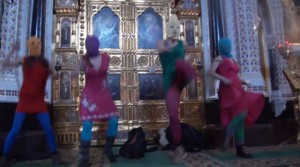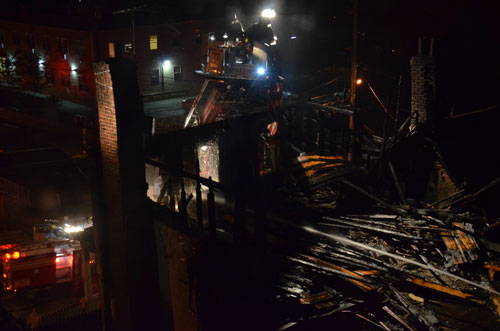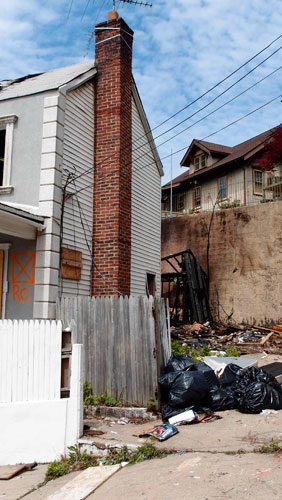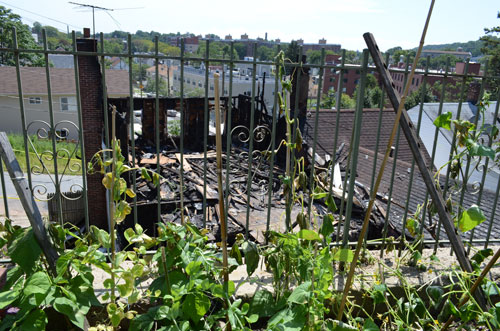
Late last year I gave a talk in London, “Dinosaur Bones: The End (and Ends) of Photo Criticism,” in which, among other things, I bemoaned the fact that the newspaper and magazine industry has begun to replace specialized critics grounded in the visual arts (like me) with “cultural journalists,” generalists with no depth of knowledge about anything in particular. I predicted dire consequences for intelligent, informed discourse about the arts in general and the visual arts specifically.

The example I used in that talk — simply because I’d chanced upon it serendipitously, it was recent, and it appeared in a UK publication — was Jane O’Brien’s story, “Gertrude Stein celebrated at two Washington DC museums,” posted at BBC News Online on October 14, 2011, which opens forthrightly as follows:
“I’ve often wondered whether approaching a subject from a standpoint of total ignorance sharpens my investigative powers, or whether it simply leads to inevitable embarrassment from which I’ll never recover. That thought was uppermost when the National Portrait Gallery announced the opening of an exhibition on Gertrude Stein. Of course I’d heard of her — wasn’t she that famous feminist who burned her bra in the 1960s? — But beyond that I really had no idea who she actually was.”
As I said in London that November evening, “There you have cultural journalism in a nutshell, atypical only in the candidness with which its author confesses her incompetence for the task at hand and her editors’ and publishers’ willingness to lay on the table her lack of qualification for this assignment.”

Now I’m able to direct your attention to a made-in-the-USA example of cultural journalism with contemporary photography as its subject: “Art photography: When ‘reality isn’t good enough,'” by Ashley Strickland, posted at CNN on August 11, 2012. Here’s an excerpt:
“Ansel Adams, one of the greatest photographers of the 20th century, retouched his images. In the darkroom, Adams would burn his shadows darker and dodge the brightness lighter to create dramatic black and white photos.”
Never mind that this does not in any way constitute “retouching,” a specific way of altering negatives and prints that has nothing to do with burning and/or dodging during exposure. This example hardly does justice to the dramatic naïveté, enchanting ignorance, and sweeping pointlessness of Strickland’s breathless venture into what for her is clearly new and unexplored territory. As with the O’Brien piece on Stein, its terrifying implications manifest themselves only after you consume the whole enchilada. Read it and weep. Don’t say I didn’t warn you when your train gets lost.
(You get what you pay for. According to a CNN bio note, “Ashley Strickland is an associate producer with CNN.com. She likes twisting her own soft pretzels, perfecting pineapple upside down cake, tackling English toffee, sharing people-pleasin’ pizza dip, sunflower cheesecakes and green soup and cajoling recipes from athletes.” Exactly.)
•

Pussy Riot. Photo by Igor Mukhin, courtesy of Creative Commons.
With the Chinese Communist Party heading towards its once-every-decade leadership change, the CCP’s thousands of official censors nowadays work overtime to suppress public dissent in order to preserve the appearance of “social harmony” with which the upper echelons justify their dictatorship. They hope thus to ensure a superficially smooth transition, though in actual fact the torch will get passed over violently roiling waters.
The Bo Xilai-Gu Kailai scandal engulfing the current regime has already created severe disruption of the Party’s image in the eyes of the Chinese public (not to mention the international loss of face for their cohorts in the ruling class). Apparently there’s backstage infighting aplenty, though of course none of that makes it into the mainland Chinese media. To preserve the façade of apparent calm, the media — including the blogosphere — has also been forbidden to discuss Arab Spring and popular social unrest elsewhere in the world, out of fear that such discourse might spark comparable upheaval in China itself (referred to as a potential “jasmine revolution”).

Chinese “Pussy Riot” supporters in “face-kinis.” Screenshot from The Daily Beast, 8-21-12.
Yet the Chinese citizenry finds ingenious ways around the Great Firewall, in order to access sources of information from outside the mainland. And they demonstrate remarkable savvy in outwitting the censors via homonyms, codewords, double entendres, images, and other methods of voicing their opinions while maintaining plausible deniability if and when confronted by officialdom.
The latest example is the surge of popular support within China for the embattled Russian all-girl punk-rock protest band, Pussy Riot, given prison terms last week for protesting the ties between Vladimir Putin and the Russian Orthodox Church. According to some China-watchers who prefer to remain anonymous, the current Chinese fad for the wearing of “face-kinis” — lightweight beachwear masks ostensibly intended to keep your features fashionably pale in a country where suntanned equates with peasant — in fact constitutes a covert vote of support for Pussy Riot, whose trademark balaclavas have become iconic internationally, an ironic and surely unintended side effect of their persecution by Russia’s unconstitutional but nonetheless thriving church-state alliance.
It’s an extremely oblique (and thus very Chinese) way of signaling support of Pussy Riot — called in the Chinese media 暴动小猫, or Bao Dong Xiao Mao, which translates roughly as “Kitten Riot.” The famous rift between the Soviet Union and the People’s Republic of China that began in 1960, with Nikita Khrushchev and Mao Zedong at the helms, has nominally healed, with normalization beginning with Soviet President Mikhail Gorbachev’s 1989 visit to Beijing. So these seemingly spontaneous “Free Pussy Riot” manifestations on China’s beaches, obviously in opposition to Putin and his regime, certainly don’t follow the current mainland kissy-kissy party line in relation to Russia.

Pussy Riot performance, Russian Orthodox Church, Moscow, 2-21/12. Still from YouTube video.
Also, by supporting a group of nonconformist artists challenging the authority of the former KGB spy turned Russian politician and national leader, participation in the “face-kini craze” represents tacit support for dissident Chinese artists like Ai Weiwei and Liu Xia, viewed by the Chinese generally as the homegrown counterparts to Pussy Riot. The female band’s objections to Putin’s return to power via rigged elections last February doesn’t differ that much from the demand by current imprisoned Nobel Peace Prize awardee and Liu Xiaobo (husband of the artist Liu Xia) for free elections in China.
Be that as it may, how do you object to or prevent people from donning beachwear ostensibly for the purpose of looking well-to-do while protecting themselves against skin cancer and jellyfish? I think Beijing will have a very hard time parsing this, and an even harder time figuring out how to put a stop to it. They’ll have to hope that western journalists will continue to misunderstand this movement as a mere fashion fad until they find some way to clamp a lid on it. Good luck with that.
•

Fire, 16 Grove St., Staten Island, 8-26-12. Photo © copyright by Anna Lung.
Subsistence Farming Update: Disaster struck our back forty (that’s forty feet, not forty acres) early Sunday morning, August 26, around 2:30 a.m., as an abandoned house at 16 Grove Street, directly downhill from us, caught fire for the fourth time in six months. This five-alarm conflagration followed three others, two of them serious, on April 21, April 27, and July 4.
None of these did any serious damage to our house, though our rear windows got hot enough that a blast of cold water from a firehose cracked the exterior layer of one thermal pane. But we have most of our vegetable and fruit plantings — peppers, string beans, snow peas, cucumbers, squash, cantaloupe, eggplant, tomatoes, blackberries, a fig tree — just this side of a retaining wall between our property and the house below. The vines of some of these had wrapped themselves around the wrought-iron fence atop the retaining wall, so the rising heat scorched them, withering some of the leaves of the blackberries and the fig tree and cracking the bark on some branches of our Japanese maple.

Fire aftermath, 16 Grove St., Staten Island, 5-3-12. Photo © copyright by A. D. Coleman.
Streams from the fire hoses created their own havoc, knocking eggplants and tomatoes off their stems and blowing one almost-ripe cantaloupe somewhere not yet determined. We’re still not finished clipping off the damaged stems and leaves. No question that we’ve lost some of the bounty, especially the beans and snowpeas. And we’ll have to enjoy some of it early; we had to harvest all the cantaloupes, grown with seeds from one I’d bought at our local supermarket.
But some things will recover quickly; we still have at least another month of good growing weather ahead. Some may go into shock (like the blackberries, I predict) but come back next year. And some, like our peppers, act as if nothing had happened. Nothing to compare with the devastating midwest drought, but we feel those farmers’ pain.
While I’ve definitely experienced the impact of the recession, working as I do in the arts and education sectors of the economy, this nearby house and its sad fate represent my most immediate and tangible encounter with the consequences of the ’08 meltdown.

Fire aftermath, 16 Grove St., Staten Island, 8-26-12. Photo © copyright by Anna Lung.
Our neighbors, the previous owners of what’s become this wreck, bought it in the ’80s, improved it, took good care of it, lived there for two decades — then remortgaged it with the market at its peak, shortly before the housing crisis hit. Unable to make the new mortgage payments, they put it up for sale, couldn’t find a buyer at any price, then decamped overnight, leaving it to the mortgage holder, Chase Home Finance LLC. Chase, a division of J. P. Morgan (one of the worst offenders in the vast toxic-mortgage scam that propelled the ’08 crisis), doesn’t care about it, so the place has been looted, and vandalized, and now burned. What was a solid, livable residence three years ago has turned into a blight, and a danger to our community.
We’ll make our calls to the borough president’s office, to put some pressure on, and with luck they’ll come soon, tear it down, and cart it all away — it’s now officially designated as uninhabitable, which marks it for demolition. However long it takes for that to happen, I’ll keep you updated.
•
This post supported by a donation from the Estate of Lyle Bongé.
Dog Day Afternoons: Bits & Pieces (3)
Late last year I gave a talk in London, “Dinosaur Bones: The End (and Ends) of Photo Criticism,” in which, among other things, I bemoaned the fact that the newspaper and magazine industry has begun to replace specialized critics grounded in the visual arts (like me) with “cultural journalists,” generalists with no depth of knowledge about anything in particular. I predicted dire consequences for intelligent, informed discourse about the arts in general and the visual arts specifically.
The example I used in that talk — simply because I’d chanced upon it serendipitously, it was recent, and it appeared in a UK publication — was Jane O’Brien’s story, “Gertrude Stein celebrated at two Washington DC museums,” posted at BBC News Online on October 14, 2011, which opens forthrightly as follows:
“I’ve often wondered whether approaching a subject from a standpoint of total ignorance sharpens my investigative powers, or whether it simply leads to inevitable embarrassment from which I’ll never recover. That thought was uppermost when the National Portrait Gallery announced the opening of an exhibition on Gertrude Stein. Of course I’d heard of her — wasn’t she that famous feminist who burned her bra in the 1960s? — But beyond that I really had no idea who she actually was.”
As I said in London that November evening, “There you have cultural journalism in a nutshell, atypical only in the candidness with which its author confesses her incompetence for the task at hand and her editors’ and publishers’ willingness to lay on the table her lack of qualification for this assignment.”
Now I’m able to direct your attention to a made-in-the-USA example of cultural journalism with contemporary photography as its subject: “Art photography: When ‘reality isn’t good enough,'” by Ashley Strickland, posted at CNN on August 11, 2012. Here’s an excerpt:
“Ansel Adams, one of the greatest photographers of the 20th century, retouched his images. In the darkroom, Adams would burn his shadows darker and dodge the brightness lighter to create dramatic black and white photos.”
Never mind that this does not in any way constitute “retouching,” a specific way of altering negatives and prints that has nothing to do with burning and/or dodging during exposure. This example hardly does justice to the dramatic naïveté, enchanting ignorance, and sweeping pointlessness of Strickland’s breathless venture into what for her is clearly new and unexplored territory. As with the O’Brien piece on Stein, its terrifying implications manifest themselves only after you consume the whole enchilada. Read it and weep. Don’t say I didn’t warn you when your train gets lost.
(You get what you pay for. According to a CNN bio note, “Ashley Strickland is an associate producer with CNN.com. She likes twisting her own soft pretzels, perfecting pineapple upside down cake, tackling English toffee, sharing people-pleasin’ pizza dip, sunflower cheesecakes and green soup and cajoling recipes from athletes.” Exactly.)
•
Pussy Riot. Photo by Igor Mukhin, courtesy of Creative Commons.
With the Chinese Communist Party heading towards its once-every-decade leadership change, the CCP’s thousands of official censors nowadays work overtime to suppress public dissent in order to preserve the appearance of “social harmony” with which the upper echelons justify their dictatorship. They hope thus to ensure a superficially smooth transition, though in actual fact the torch will get passed over violently roiling waters.
The Bo Xilai-Gu Kailai scandal engulfing the current regime has already created severe disruption of the Party’s image in the eyes of the Chinese public (not to mention the international loss of face for their cohorts in the ruling class). Apparently there’s backstage infighting aplenty, though of course none of that makes it into the mainland Chinese media. To preserve the façade of apparent calm, the media — including the blogosphere — has also been forbidden to discuss Arab Spring and popular social unrest elsewhere in the world, out of fear that such discourse might spark comparable upheaval in China itself (referred to as a potential “jasmine revolution”).
Chinese “Pussy Riot” supporters in “face-kinis.” Screenshot from The Daily Beast, 8-21-12.
Yet the Chinese citizenry finds ingenious ways around the Great Firewall, in order to access sources of information from outside the mainland. And they demonstrate remarkable savvy in outwitting the censors via homonyms, codewords, double entendres, images, and other methods of voicing their opinions while maintaining plausible deniability if and when confronted by officialdom.
The latest example is the surge of popular support within China for the embattled Russian all-girl punk-rock protest band, Pussy Riot, given prison terms last week for protesting the ties between Vladimir Putin and the Russian Orthodox Church. According to some China-watchers who prefer to remain anonymous, the current Chinese fad for the wearing of “face-kinis” — lightweight beachwear masks ostensibly intended to keep your features fashionably pale in a country where suntanned equates with peasant — in fact constitutes a covert vote of support for Pussy Riot, whose trademark balaclavas have become iconic internationally, an ironic and surely unintended side effect of their persecution by Russia’s unconstitutional but nonetheless thriving church-state alliance.
It’s an extremely oblique (and thus very Chinese) way of signaling support of Pussy Riot — called in the Chinese media 暴动小猫, or Bao Dong Xiao Mao, which translates roughly as “Kitten Riot.” The famous rift between the Soviet Union and the People’s Republic of China that began in 1960, with Nikita Khrushchev and Mao Zedong at the helms, has nominally healed, with normalization beginning with Soviet President Mikhail Gorbachev’s 1989 visit to Beijing. So these seemingly spontaneous “Free Pussy Riot” manifestations on China’s beaches, obviously in opposition to Putin and his regime, certainly don’t follow the current mainland kissy-kissy party line in relation to Russia.
Pussy Riot performance, Russian Orthodox Church, Moscow, 2-21/12. Still from YouTube video.
Also, by supporting a group of nonconformist artists challenging the authority of the former KGB spy turned Russian politician and national leader, participation in the “face-kini craze” represents tacit support for dissident Chinese artists like Ai Weiwei and Liu Xia, viewed by the Chinese generally as the homegrown counterparts to Pussy Riot. The female band’s objections to Putin’s return to power via rigged elections last February doesn’t differ that much from the demand by current imprisoned Nobel Peace Prize awardee and Liu Xiaobo (husband of the artist Liu Xia) for free elections in China.
Be that as it may, how do you object to or prevent people from donning beachwear ostensibly for the purpose of looking well-to-do while protecting themselves against skin cancer and jellyfish? I think Beijing will have a very hard time parsing this, and an even harder time figuring out how to put a stop to it. They’ll have to hope that western journalists will continue to misunderstand this movement as a mere fashion fad until they find some way to clamp a lid on it. Good luck with that.
•
Fire, 16 Grove St., Staten Island, 8-26-12. Photo © copyright by Anna Lung.
Subsistence Farming Update: Disaster struck our back forty (that’s forty feet, not forty acres) early Sunday morning, August 26, around 2:30 a.m., as an abandoned house at 16 Grove Street, directly downhill from us, caught fire for the fourth time in six months. This five-alarm conflagration followed three others, two of them serious, on April 21, April 27, and July 4.
None of these did any serious damage to our house, though our rear windows got hot enough that a blast of cold water from a firehose cracked the exterior layer of one thermal pane. But we have most of our vegetable and fruit plantings — peppers, string beans, snow peas, cucumbers, squash, cantaloupe, eggplant, tomatoes, blackberries, a fig tree — just this side of a retaining wall between our property and the house below. The vines of some of these had wrapped themselves around the wrought-iron fence atop the retaining wall, so the rising heat scorched them, withering some of the leaves of the blackberries and the fig tree and cracking the bark on some branches of our Japanese maple.
Fire aftermath, 16 Grove St., Staten Island, 5-3-12. Photo © copyright by A. D. Coleman.
Streams from the fire hoses created their own havoc, knocking eggplants and tomatoes off their stems and blowing one almost-ripe cantaloupe somewhere not yet determined. We’re still not finished clipping off the damaged stems and leaves. No question that we’ve lost some of the bounty, especially the beans and snowpeas. And we’ll have to enjoy some of it early; we had to harvest all the cantaloupes, grown with seeds from one I’d bought at our local supermarket.
But some things will recover quickly; we still have at least another month of good growing weather ahead. Some may go into shock (like the blackberries, I predict) but come back next year. And some, like our peppers, act as if nothing had happened. Nothing to compare with the devastating midwest drought, but we feel those farmers’ pain.
While I’ve definitely experienced the impact of the recession, working as I do in the arts and education sectors of the economy, this nearby house and its sad fate represent my most immediate and tangible encounter with the consequences of the ’08 meltdown.
Fire aftermath, 16 Grove St., Staten Island, 8-26-12. Photo © copyright by Anna Lung.
Our neighbors, the previous owners of what’s become this wreck, bought it in the ’80s, improved it, took good care of it, lived there for two decades — then remortgaged it with the market at its peak, shortly before the housing crisis hit. Unable to make the new mortgage payments, they put it up for sale, couldn’t find a buyer at any price, then decamped overnight, leaving it to the mortgage holder, Chase Home Finance LLC. Chase, a division of J. P. Morgan (one of the worst offenders in the vast toxic-mortgage scam that propelled the ’08 crisis), doesn’t care about it, so the place has been looted, and vandalized, and now burned. What was a solid, livable residence three years ago has turned into a blight, and a danger to our community.
We’ll make our calls to the borough president’s office, to put some pressure on, and with luck they’ll come soon, tear it down, and cart it all away — it’s now officially designated as uninhabitable, which marks it for demolition. However long it takes for that to happen, I’ll keep you updated.
•
This post supported by a donation from the Estate of Lyle Bongé.